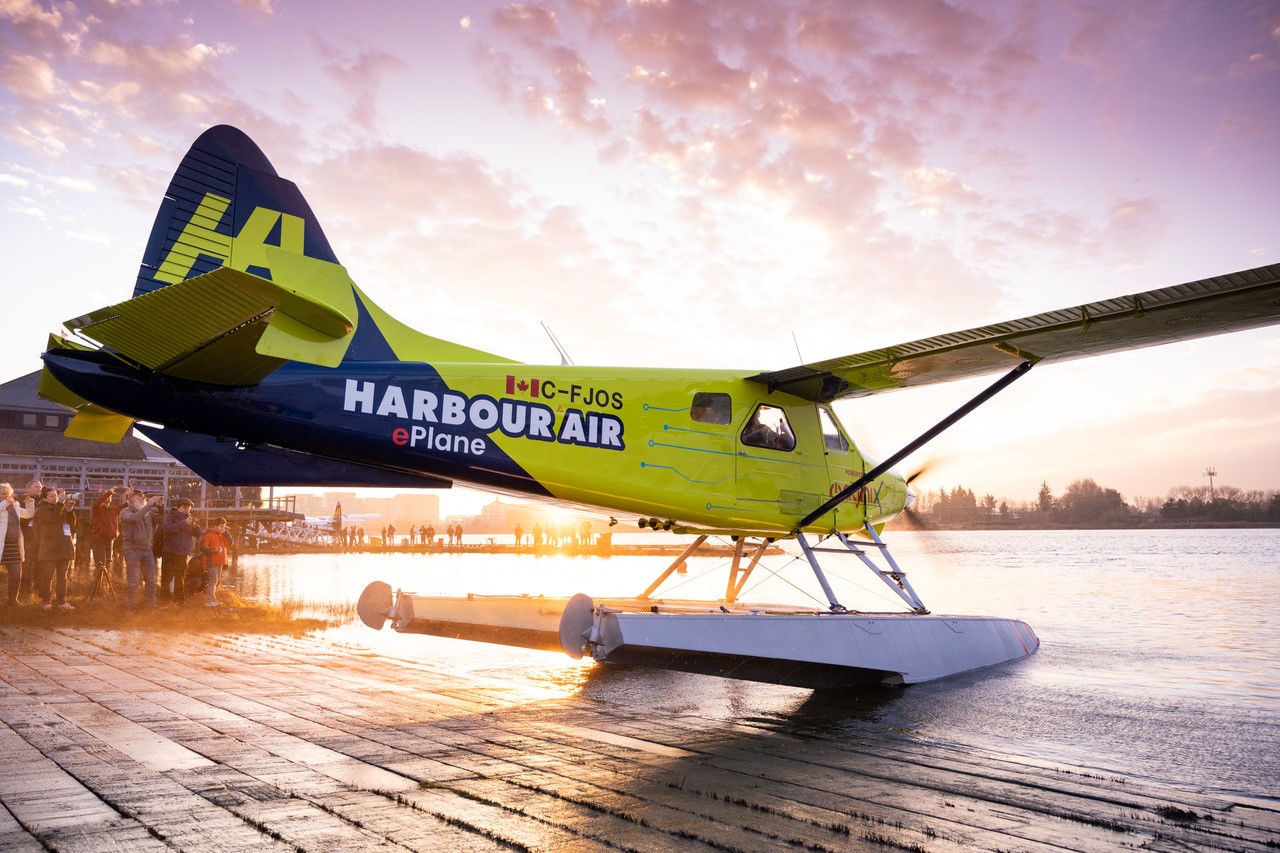Harbour Air Leads The Way With All Electric Aircraft
09 December, 2023
4 min read

Geoffrey Thomas
By joining our newsletter, you agree to our Privacy Policy


Harbour Air, the world’s second-largest water-based commercial airline with 45 floatplanes, is leading the way with an all-electric aircraft.
The company is based in British Columbia on the west coast and flies up to 28 times a day in each direction between Vancouver and Victoria, Vancouver Island. It carries about 440,000 customers each year in its regional network as far as Seattle.
Harbour Air punched high above its weight when it made global headlines in December 2019 reading “The world’s first electrical passenger aircraft flight.” Star of the day and icon for the future was, ironically, an old-timer aircraft the legendary Canadian de Havilland DHC-2 Beaver, a six-seater, of which Harbour Air operates 14. While built through the 50s and 60s these workhorses are as good as new due to intensive maintenance and care.
The pioneering flight above Vancouver took just 15 minutes, the original front-mounted Pratt & Whitney P-985 Wasp Junior piston engine had been replaced by a Magni500 electrical motor, supplied by US manufacturer MagniX, generating 750 horse powers (559 kW). The battery was supplied by a US company as well.
After the pandemic, the world’s first point-to-point electrical flight of an “ePlane” followed in August 2022, it took 24 minutes and covered a distance of 72 kilometres. “With the first electric Beaver we have achieved 78 takeoffs and landings and about 50 flight hours, but we realize the 2019 battery is not very good anymore, same as in my iPhone,” says Bert van der Stege, the Dutch CEO of Harbour Air, who has worked for Lufthansa Group many years.
“Now we are replacing the battery with a new, lighter one made by a company called H55 from Switzerland, to provide power for the second aircraft that we will put through the certification process,” explains van der Stege in talking to Airlineratings in Victoria.
One of the founders of H55 is André Borschberg, who circumnavigated the globe with his fellow pilot Bertrand Piccard in 2015/16 on their Solar Impulse aircraft, purely driven by solar energy. “Harbour Air is an interesting example of a pioneer having decided on its own to advance electrification, and we need partners ready to go the first step,” stresses André Borschberg.

Propulsion is once again coming from MagniX in Seattle, this time providing the more powerful electrical motor Magni650, generating 850 hp (640 kW). Currently, certification of the new “eBeaver” is ongoing at the FAA in the US as well as in Canada. “We are working to get the aircraft certified by 2025. If we achieve that, it will have an endurance of 30 to 35 minutes flight time plus 25 minutes reserve, which is sufficient for most of our routes,” according to the Harbour Air CEO.
“We hope to be able to take three to four passengers on these flights from the end of 2025,” says Bert van der Stege. It could take up to a decade to retrofit the entire fleet with green propulsion, including hybrid Twin Otters, probably then powered by hydrogen, being the biggest aircraft with 18 seats. “Maybe we can become the first airline in two years to sell tickets on electrical aircraft for scheduled flights from A to B,” hopes van der Stege.
So far the test program of the “eBeaver” has gone surprisingly smoothly: “We are almost disappointed that not more happened and everything goes according to plan, there are very few surprises”, says the CEO.
Some learnings are still to be made: “Battery power and time needed to recharge also depend on the water temperature. The longer the aircraft is parked in cold water, the longer it takes. But it is our advantage that we are flying in very low altitudes, and therefore only need very limited energy on takeoff, much less than others.”
Test results of electrical floatplanes are more important than originally thought, as it becomes more likely that the entry of electric engines into passenger flying will probably begin with water-based aircraft. “It will take at least five to ten more years until the next big step in battery development will reach production aircraft,” explains André Borschberg. But he assures: “By the end of the decade, we will see hundreds, if not thousands of small electric aircraft in the sky, they will be trailblazers to develop technologies for the electrification of bigger aircraft.”

Next Article
Virgin gets nod for Tiger deal

Get the latest news and updates straight to your inbox
No spam, no hassle, no fuss, just airline news direct to you.
By joining our newsletter, you agree to our Privacy Policy
Find us on social media
Comments
No comments yet, be the first to write one.
